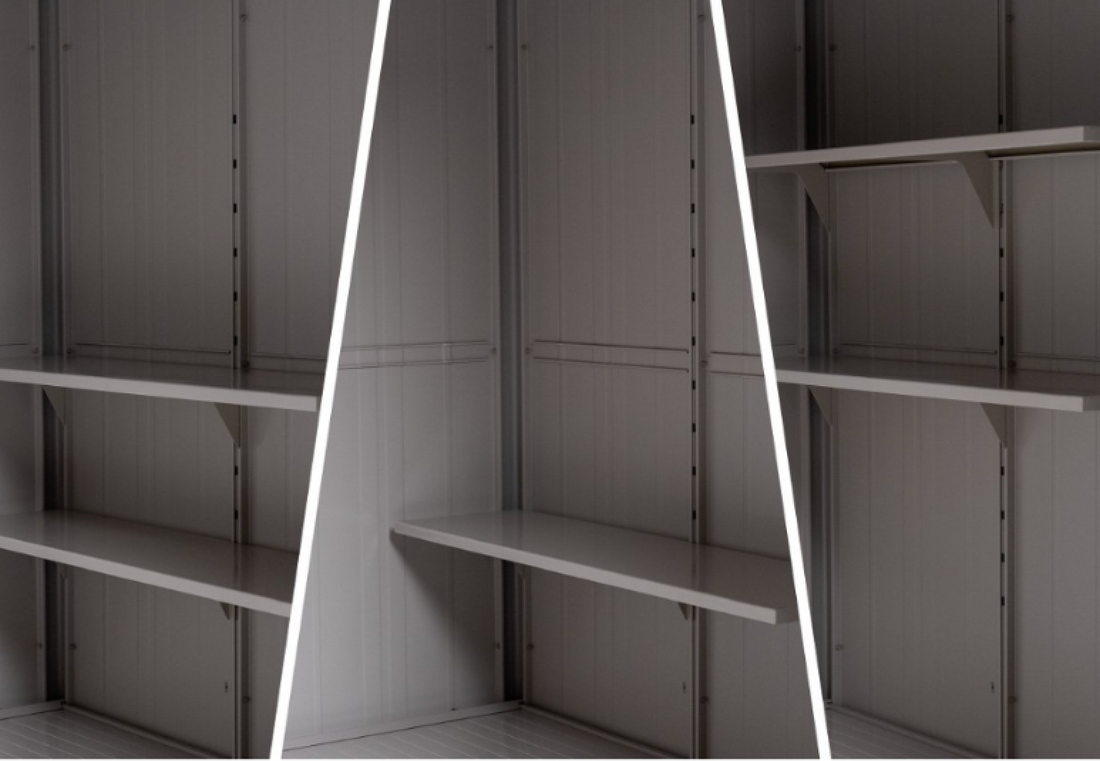
The Complete Guide to Choosing a Steel Outdoor Storage Cabinet
Share
Not all outdoor storage is created equal—and when it comes to lasting performance, security, and weather resistance, steel cabinets are in a category of their own. Whether you're organizing a backyard, patio, garage, or side yard, choosing the right steel outdoor cabinet can make a huge difference in durability, functionality, and visual appeal.
This guide breaks down everything you need to know to make an informed purchase—from materials and coatings to sizing, placement, and must-have features.
1. Why Choose Steel Over Other Materials?
Steel outperforms wood and plastic in almost every outdoor condition:
- Resists warping, rotting, and cracking
- Withstands UV rays, rain, snow, and humidity
- Doesn’t require repainting, staining, or sealing
- Offers higher structural strength and security
Unlike plastic (which may fade or become brittle) or wood (which attracts termites and needs constant sealing), galvanized or powder-coated steel provides long-term, worry-free storage.

2. Key Features to Look For
When comparing steel cabinets, focus on the following:
- Material grade: Galvanized or stainless steel resists rust; powder coating adds durability
- Sealed doors: Prevent moisture, dust, and pests
- Locking mechanisms: Keep tools secure from theft
- Ventilation: Allows airflow to prevent mildew
- Adjustable shelving: Helps organize gear efficiently
- Modular design: Lets you expand or customize as needed
3. Match the Size to Your Needs
Outdoor cabinets come in many sizes. Consider:
- Small cabinets (2–4 ft): Ideal for balconies or storing hand tools
- Medium cabinets (5–6 ft): Great for yard tools, garden supplies
- Large units (6+ ft or double-door models): Best for garages, equipment storage, or shared spaces
Always measure your space before buying—and consider whether you’ll need to move or expand the unit later.

4. Placement Tips for Performance and Longevity
Where you place your cabinet can affect how long it lasts and how easy it is to use:
- Avoid direct soil contact: Use pavers or concrete pads
- Choose flat, level surfaces: Prevents leaning or warping
- Position near entry points: For quick access to tools
- Add shade if possible: Helps protect finish in hot climates
If wind is an issue, look for models with anchoring hardware or bolt-down options.
5. Mistakes to Avoid
- Skipping ventilation: Can lead to trapped humidity and rust
- Buying for looks only: Some low-cost models are not weather-rated
- Neglecting base clearance: Sitting flush with the ground traps moisture
- Assuming all "metal" is equal: Thin aluminum warps easily; choose heavy-gauge steel
Final Checklist
Before you buy, confirm the cabinet:
-
Is made from galvanized or coated steel
- Has sealed doors and locking options
- Offers ventilation and interior organization
- Fits your available space and storage needs
- Is rated for outdoor, all-weather use

